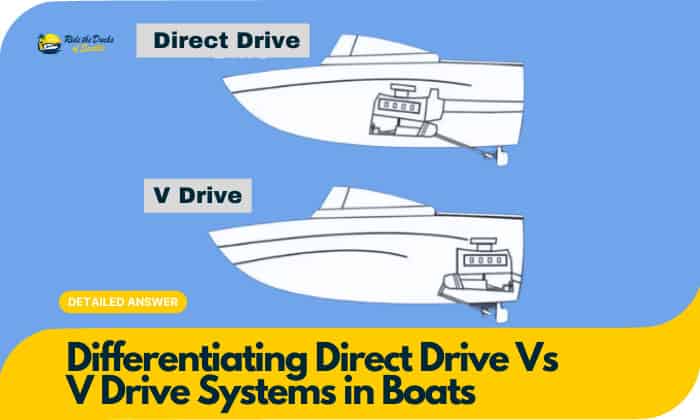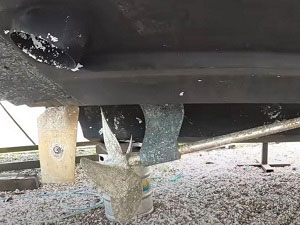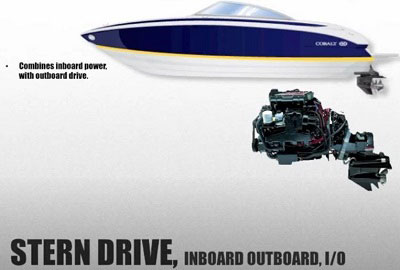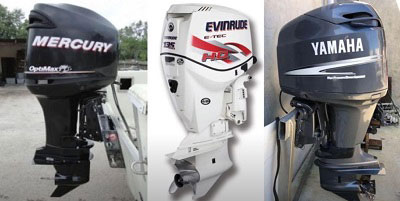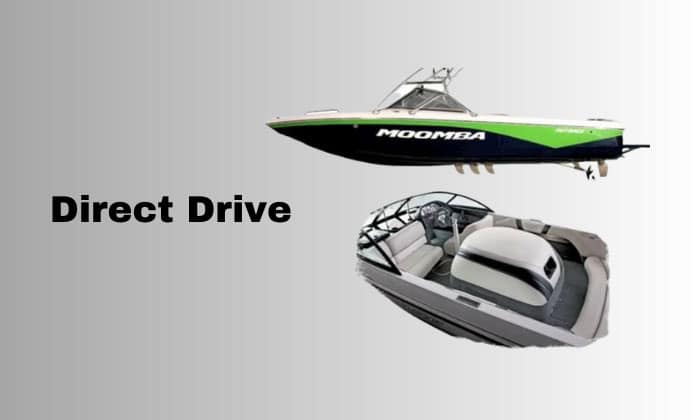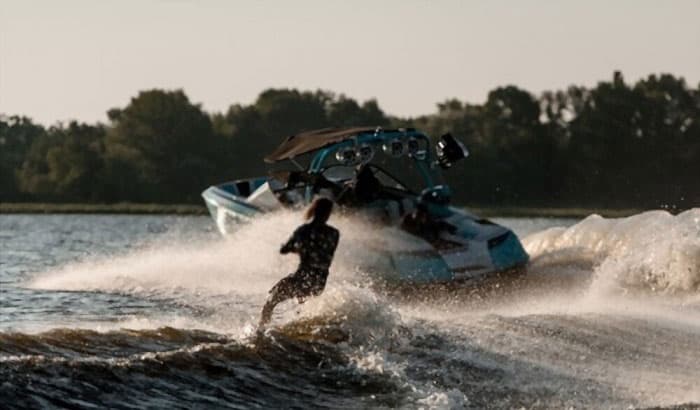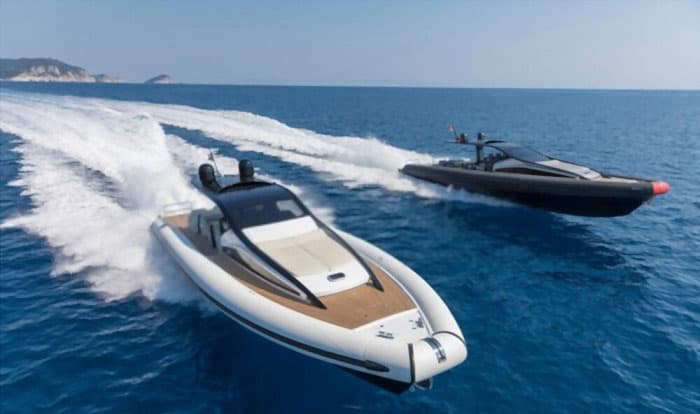Watersports are so much fun, but do you know how to differentiate direct drive vs V drive towboats? These transmission configurations allow you to enjoy water skiing, wakeboarding, wake surfing, and other boat-towed water adventures. But which system should you get?
Read this article to learn which watercraft drive system is perfect for your water adventure.
Table of Contents
What is a Direct Drive or V-Drive?
Let us start with a definition of a boat’s drive. After all, we aim to differentiate a direct from a V-drive system.
Motor-powered boats have an engine, transmission, and propeller comprising their propulsion. The engine generates power, which the transmission (or gears) conveys to the propellers. And the boat “moves” on water.
The whole system we described is the boat’s “drive.” It is similar to a 2WD or 4WD system in cars. Two-wheel-drive vehicles have engines and transmissions delivering power to two wheels.
Differentiating V drive vs direct drive systems hinges on the boat’s propulsion configuration, exemplified by the boat’s drive type.
Types of Boat Drives
There are four boat drive types. Let us look at each to determine which classification direct and V-drive systems will fall under.
- Inboard shaft – This marine propulsion system has an inboard engine and a propeller shaft extending from the motor through the boat’s hull. The prop shaft exits near the watercraft’s midsection or aft (rear). V-drive and direct drive boats fall under this category.
- Inboard stern – This system features an inboard engine and an outboard drive or transmission. Most boaters call this configuration “stern drive.”
- Outboard – As the name implies, an outboard motor is an all-in-one package (i.e., engine, transmission, propellers, and rudder in one unit). The motor mounts to the boat’s exterior at the rear.
- Pod – This propulsion system features a mid- or aft-mounted inboard engine connected to a “pod” housing the transmission, outdrive, and propeller.
What is a Direct Drive System?
It should be easier now to appreciate the direct drive meaning.
This propulsion system is an inboard shaft-type, with the engine and drive system “in the boat.” The propeller shaft extends from the motor and exits through the hull. The question now is, where is the engine?
Direct-drive systems have the engine in the center of the boat. The motor powers the drive shaft, spinning the propeller. The engine-drive-propeller configuration forms a straight line, hence the name “direct.”
The engine’s placement in the boat’s mid-section ensures energy efficiency and more uniform weight distribution. The design allows the watercraft to create smaller, “gentler,” and more “crossable” wakes, perfect for slalom skiing.
The “straight line” propeller shaft exits the boat’s bottom hull at a seven- to twelve-degree angle to lift the watercraft.
The diagram or image below depicts the typical layout of a direct drive system.
A Related guide:
What is a V-Drive System?
Differentiating a V-drive boat vs inboard sterndrive towboat can be challenging. The confusion stems from the engine’s position. Both systems mount the engine at the stern or aft (rear). Hence, some folks use sterndrives and V-drives almost interchangeably.
Remembering the drive types, we know that sterndrives have the transmission or drive system outside the boat. Meanwhile, the V-drive is “in the boat,” hence the “inboard shaft” classification.
So, a direct drive system features an inboard engine dead center, while a V-drive configuration puts the motor at the rear. How did it get its “V” name?
A V-drive engine faces the boat’s rear. Meanwhile, the motor’s power output shaft has a bow orientation (forward-facing). The V-drive transmission conveys mechanical energy to the propeller shaft.
However, because the propellers are also at the rear, the drive gears must reverse the power output by 180 degrees. Hence, if we were to cut a cross-section of the boat, the engine-transmission and prop shaft elements form a letter “V.”
Differences Between V-drive and Direct Drive Systems
Direct and V-drive systems are both inboard shaft types. Both have the propellers connected to a draft shaft (and mated to the boat’s engine and transmission). So, where do they vary?
1. Engine location
The most significant difference between a direct and V-drive system is the engine placement. V-drives have the motor at the boat’s rear, while a direct-drive watercraft is in the midsection.
2. Weight distribution
As mentioned, direct-drive vessels have a more uniform weight distribution. The mid-positioned engine pushes the watercraft squarely on the water. On the other hand, a V-drive boat is heavier at the rear, increasing the tendency of the bow to lift into the air higher than the stern.
3. Efficiency
A V-drive’s “complicated” engine-transmission-shaft configuration makes it prone to more significant horsepower losses. You will burn and waste more fuel with this system than a direct-drive design.
4. Purpose
A V-drive watercraft’s low-stern, high-bow tilt makes it ideal for board-related water sports (i.e., wakeboarding, wake surfing, and wake skating). The design allows the propulsion system to create more massive wakes.
On the other hand, a direct-drive vessel’s uniformly distributed weight allows for gentler or calmer wakes. It is the perfect scenario for performance slalom events like water skiing.
Benefits and Drawbacks of Direct Drive Systems
Direct drive systems have a straightforward design, making them effortless to operate. The engine-transmission-drive shaft “straight line” orientation also reduces mechanical parts, simplifying maintenance activities.
The only issue with such a system is space. Direct drives limit available cabin space because the engine occupies the boat’s center. You will have fewer passengers onboard, requiring careful planning to make your water adventures more worthwhile.
It is worth pointing out that direct drives are also challenging to reverse and do not allow for trimming. The system shares these drawbacks with the V-drive.
Both systems feature a rudder sitting behind the propeller. When you reverse, the boat pulls to the right (or left) and makes maneuvering exceptionally challenging.
Benefits and Drawbacks of V-drive Systems
If direct-drive towboats are a water skier’s favorite watercraft, wakeboarders and wake surfers often demand a V-drive boat. Its orientation creates tsunami-like wakes for water adventurers to perform stunts.
Leading V-drive brands design their systems for maximum reliability, ensuring users never worry about the drive breaking down.
Unfortunately, if the V-drive malfunctions, accessing it is more challenging than a direct drive because the components are closer to the boat’s transom. It is one of the V-drive problems potential boat owners must consider.
The engine’s placement at the stern also frees cabin space for additional passengers. However, the system’s complicated design also crams different components near the transom.
One issue with a V-drive is unnecessary power loss. Reversing the power output direction by 180 degrees (creating the V shape) impacts energy delivery. Hence, the motor works double-time to convey the necessary power to turn the propeller. Sadly, doing so burns more fuel.
We summarized the positives and negatives of both drive systems in the following table for easier understanding.
| Direct Drive | V Drive | |
| Pros |
|
|
| Cons |
|
|
FAQs
Direct drive vs V drive towboat: which is better?
Which between a V-drive and direct drive engine is better depends on your favorite water adventures.
Direct drives are perfect for towing skiers because the boat creates flat and soft wakes. On the other hand, V-drives are ideal for wakeboarders. The motor produces tsunami-like surf wakes.
What if I can’t choose between direct drive or a V-drive towboat?
Some manufacturers offer a crossover towboat that allows operators to pilot their watercraft and create ideal surf for wakeboarding and gentle wakes for slalom.
Examples of crossover towboats are the Malibu Wakesetter 20 VTX, 21 VLX, and 23 LSV.
Why are stern drives not ideal for wake surfing?
Boats with stern drives or inboard and outboard motor (I/O) units have the drive and transmission mounted exterior to the watercraft’s transom.
Wake surfing requires the person to stay three to six feet behind the boat’s stern. Unfortunately, the drive’s location makes it unsafe for the wake surfer because of the high risk of hitting the propeller. The wake surfer can also inhale toxic exhaust fumes.
You can still use stern drives with a rope to tow you 15 to 20 feet behind the boat. This trick might not be as thrilling as authentic wake surfing, but it is safer.
Conclusion
Differentiating a direct drive vs V drive system is as effortless as determining the boat’s engine placement.
It is a direct-drive vessel if the motor is in the middle (think mid-engined cars like the Porsche Boxster and Audi R8). Meanwhile, a V-drive watercraft has the engine at the rear (think rear-engined vehicles like BMW i3 and Porsche 911).
Other differences emanate from the boat’s engine configuration, including recommended use (water skiing vs. wakeboarding), energy efficiency, and weight distribution.

Ten years of enjoying countless trips on boats never made me love them any less! So I am here to put all those experiences into good use for other boaters who want to have a safe and fun trip with their friends and families.

